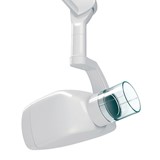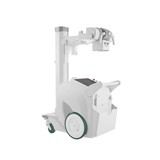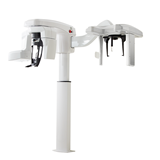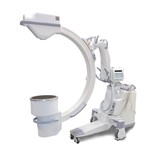X-ray machines stand as indispensable tools in both healthcare and industrial domains, enabling non-invasive imaging for diagnostics and quality control. The continual evolution of technology underscores the necessity of upgrading and retrofitting these systems to maintain their efficiency, accuracy, and compliance with industry standards. This pillar post delves into the critical aspects of upgrading and retrofitting X-ray systems, offering a comprehensive understanding of when and why such enhancements are essential, the benefits they entail, and the intricate technical and financial considerations involved. By employing an informative, professional, and objective approach, this post aims to provide valuable insights and expert recommendations to professionals and decision-makers seeking to optimize their X-ray systems while ensuring a clear and concise presentation of the information at hand. Through a structured and authoritative style, this post presents a neutral and balanced perspective on the features, benefits, and considerations inherent to the upgrading and retrofitting of X-ray machines.
I. Assessing the Need for System Upgrades or Replacements
A. The Lifecycle of X-ray Systems and Factors Contributing to Obsolescence
X-ray systems, like any complex technology, follow a natural lifecycle that encompasses introduction, growth, maturity, and eventual decline.
Rapid technological advancements, such as improved imaging algorithms and hardware innovations, can render older systems outdated.
Incompatibility with new software and components may lead to operational challenges and reduced diagnostic accuracy.
B. Importance of Performance Evaluation and Identifying Signs for Potential Upgrades
Regular performance evaluations are paramount in determining whether an X-ray system is meeting current demands effectively.
Signs of potential upgrades include reduced image quality, increased error rates, and longer processing times.
Diagnostic accuracy and patient safety may be compromised if signs of system deterioration are ignored.
C. Key Considerations: Technological Advancements, Maintenance Costs, Regulatory Compliance
Technological leaps in X-ray imaging, such as the shift to digital detectors and enhanced image processing, necessitate thorough evaluation of existing systems.
Balancing maintenance costs against the benefits of upgrading is essential for cost-effective long-term operation.
Adhering to evolving regulatory standards, whether in the medical or industrial sector, requires periodic assessments and potential upgrades to ensure compliance.
II. Integrating Digital Imaging Technology for Enhanced Diagnostics
A. Advantages of Digital Imaging Over Traditional Methods
- Digital imaging revolutionizes X-ray diagnostics through advanced technology.
- Provides superior image quality compared to analog methods.
- Enables higher resolution, revealing finer details for accurate diagnoses.
- Digital images can be easily enhanced, manipulated, and shared for collaboration.
B. Benefits of High-Resolution Images and Improved Image Processing
- High-resolution digital images offer enhanced clarity and precision.
- Greater sensitivity to subtle changes aids in early disease detection.
- Advanced image processing algorithms reduce noise and artifacts.
- Improved visualization of complex anatomical structures enhances diagnostic confidence.
C. Navigating Compatibility Challenges during Integration
- Transitioning to digital imaging may entail interoperability issues.
- Legacy systems may lack necessary interfaces for seamless integration.
- Potential solutions include custom adapters or interface upgrades.
- Collaborating with experienced technicians ensures successful integration.
III. Retrofitting Older Systems with Newer Components
A. Cost-Effective Benefits of Retrofitting
- Retrofitting offers a practical alternative to replacing entire X-ray systems.
- Minimizes financial burden while enhancing system performance.
- Extends the lifespan of existing equipment, optimizing investment.
- Particularly advantageous for budget-conscious healthcare facilities or industries.
B. Eligible Components for Upgrades
- Core components eligible for upgrades include X-ray tubes, detectors, and software.
- Upgraded X-ray tubes improve image quality, reducing patient radiation exposure.
- Advanced detectors enhance sensitivity, yielding more accurate results.
- Updated software systems offer improved compatibility and functionality.
C. Ensuring Compatibility and Seamless Integration
- Compatibility between new and existing components is paramount.
- Thorough assessment of the existing system's architecture is necessary.
- Collaborating with retrofitting specialists to ensure harmonious integration.
- Rigorous testing and quality assurance prevent operational disruptions.
IV. Balancing Costs and Benefits of Upgrades
Upgrading an X-ray system involves a careful analysis of costs and benefits to ensure a judicious investment. This section delves into the essential components of this evaluation, offering a comprehensive breakdown of potential costs, highlighting the Return on Investment (ROI) considerations, and presenting strategies to optimize benefits while maintaining quality.
A. Breakdown of Potential Costs
When contemplating an upgrade for an X-ray machine, it's crucial to consider the various costs associated with the process. These costs can be categorized into several key areas:
- Equipment: The initial investment in new components or technologies, such as X-ray tubes, detectors, or control panels, constitutes a significant portion of the expenses.
- Installation: The costs involved in dismantling the old system, installing the upgraded components, and ensuring proper integration with existing infrastructure can vary based on complexity.
- Training: Ensuring that personnel are proficient in operating and maintaining the upgraded system may require training programs, which contribute to the overall financial outlay.
- Downtime: During the upgrade process, the X-ray system might be out of operation, leading to potential revenue loss or delays in patient care. Calculating the financial impact of this downtime is essential.
B. ROI Assessment
While costs are a critical consideration, evaluating the potential benefits of an upgrade is equally vital. A thorough ROI assessment can provide insights into the long-term value of the investment. Here are key benefits that contribute to the ROI equation:
- Enhanced Diagnostics: Upgraded X-ray systems often offer improved imaging quality and diagnostic accuracy. Accurate and detailed images facilitate precise diagnoses, leading to better patient outcomes and more informed decision-making in industrial settings.
- Reduced Maintenance: Newer components and technologies generally require less frequent maintenance, leading to reduced operational costs and minimized downtime.
- Regulatory Compliance: Staying updated with the latest regulatory standards is essential in both healthcare and industrial sectors. Upgraded systems can help ensure compliance, avoiding potential fines and legal issues.
C. Strategies for Cost Reduction and Optimizing Benefits
Striking a balance between costs and benefits involves strategic decision-making. To achieve this balance without compromising quality, consider the following strategies:
- Prioritization: Identify the most critical components or features that need upgrading, based on the specific needs of your practice or industry. This targeted approach can help control costs.
- Vendor Collaboration: Engage with reputable vendors who can provide transparent pricing, technical support, and warranties. Collaborating closely with vendors can lead to more accurate cost estimates and better service.
- Long-Term Vision: Consider the long-term impact of your investment. While certain upgrades might have higher initial costs, they could yield more substantial benefits over time.
V. Adapting to Changing Healthcare or Industrial Requirements
In an ever-evolving landscape, the healthcare and industrial sectors are continually shaped by advancing technologies, changing regulations, and dynamic operational demands. As these sectors experience shifts, X-ray systems, vital tools for diagnostics and quality control, must also adapt to ensure their continued efficacy. This section delves into the process of adapting X-ray systems to meet the shifting needs of healthcare and industrial domains, highlighting the flexibility of upgradable systems and real-world case studies that underscore successful adaptation through strategic system upgrades.
A. Exploration of Evolving Needs in Healthcare and Industrial Sectors
The healthcare and industrial sectors are intrinsically tied to progress, as emerging diseases, innovative treatments, and evolving industrial processes necessitate a perpetual transformation of their methodologies. In healthcare, the demand for faster and more accurate diagnostics has spurred the need for X-ray systems capable of producing high-resolution images promptly. In parallel, industrial sectors increasingly rely on X-ray systems for quality control and flaw detection in manufacturing processes. These evolving needs drive the requirement for X-ray systems that not only deliver accurate results but also offer the versatility to address diverse applications within these sectors.
B. Flexibility of Upgradable Systems to Meet Changing Regulatory and Operational Demands
The hallmark of a robust X-ray system is its adaptability to accommodate regulatory changes and operational variations. Upgradable X-ray systems stand as a testament to this adaptability, allowing institutions to remain compliant with evolving regulations without undergoing complete overhauls. This flexibility offers a cost-effective solution to the challenge of keeping pace with shifting standards, safeguarding both patient care and industrial output. By integrating modular components and software updates, these systems can seamlessly evolve to meet emerging requirements, be it updated radiation safety protocols in healthcare or stringent quality standards in manufacturing.
C. Case Studies Illustrating Successful Adaptation through System Upgrades
Real-world success stories further emphasize the efficacy of adapting X-ray systems through strategic upgrades. One notable example is the transformation of a medical imaging facility struggling with outdated X-ray equipment. By strategically upgrading key components, including the X-ray tube and image processing software, the facility significantly enhanced its diagnostic capabilities. Consequently, patient outcomes improved, demonstrating the direct correlation between system adaptability and healthcare quality.
Similarly, in the industrial realm, a manufacturing plant confronted challenges in meeting stringent quality control standards for its products. Through a well-planned retrofitting initiative, the plant integrated advanced X-ray components into its existing system. This move not only elevated product quality by identifying defects with higher precision but also reduced operational downtime. These cases exemplify the strategic use of system upgrades to address specific challenges while future-proofing operations.





















